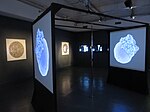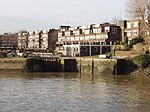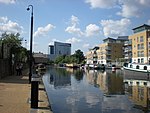Brentford Urban District
Brentford was a local government district in the county of Middlesex, England from 1874 to 1927. Brentford Local Government District was created in 1874 under the Local Government Act 1858 and covered the civil parish of New Brentford and the chapelry of Old Brentford in the parish of Ealing. The district was governed by a local board of twelve members.The Local Government Act 1894 reconstituted the local board's area as an urban district, and Brentford Urban District Council replaced the local board. The urban district consisted of two civil parishes of old and New Brentford. The local board was originally based at the Market House, Old Brentford. This building was shared with the county court and petty sessions. The UDC subsequently moved their offices to Clifden House in Boston Manor Road.In 1903, the council built Brentford Public Library. In 1927 Brentford UD was amalgamated with the neighbouring Chiswick Urban District to form Brentford and Chiswick Urban District.
Excerpt from the Wikipedia article Brentford Urban District (License: CC BY-SA 3.0, Authors).Brentford Urban District
Ealing Road, London
Geographical coordinates (GPS) Address Nearby Places Show on map
Geographical coordinates (GPS)
| Latitude | Longitude |
|---|---|
| N 51.487 ° | E -0.3 ° |
Address
Ealing Road
Ealing Road
TW8 0LQ London (London Borough of Hounslow, Haverfield Estate)
England, United Kingdom
Open on Google Maps










